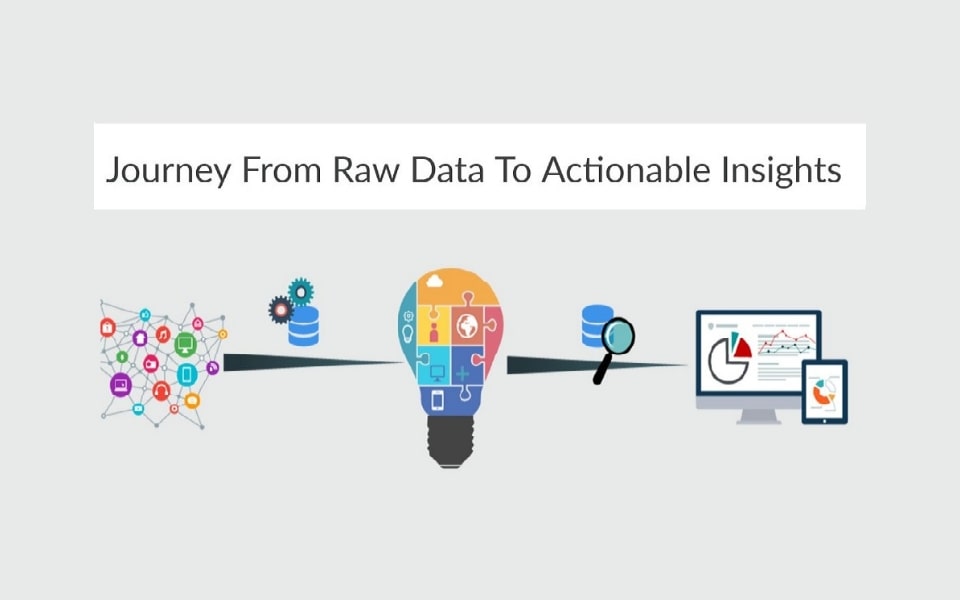Subscribe to Our Newsletter
Stay updated with the latest tips and strategies. Get additional discounts and alerts on offers.

Big Data in B2B Industry, was the talk of last year and every single organization that has heard about it at least once, might have thought of implementing it. For those who argue that big data is not for all businesses, that isn’t true. With a few tweaks, it can be modeled to any kind of industry and organizations can be benefited from the actionable insights derived from Raw Data accumulated.

In the world of the B2B industry, today’s marketers do not doubt that big data has a big role to play, even though it has been around for years. It has a long history even before the computers, as the idea of creating an ever-expanding body of knowledge ripe for analysis was popular even from ancient times.
The earliest example of humans storing and analyzing data is the tally sticks. The Ishango Bone discovered in 1960 in Uganda, is considered to be one of the earliest pieces of evidence of prehistoric data storage. Things have taken a huge turn from there over time. However, in the age of the internet, Data is essential in all walks of life and businesses. But big data and actionable insights are still confusing for many marketers.
Big data is nothing but a more straightforward word for “tons of information”. In technical terms, it’s extremely large data sets that can be computationally analyzed to uncover actionable insights. Now a majority of marketers make the mistake of considering data, information, and insights as synonyms. Data are the raw facts that are usually in the form of texts and numbers. It can either be in qualitative (observed) or quantitative (measured) form.
The problem with data is that it mostly exists in computer-friendly formats in databases and spreadsheets. Information is the data that has been processed, aggregated, and organized to more of a human-friendly format. Information will be mostly presented in the form of data visualizations, reports, and dashboards. And finally, actionable insights are created by studying information and arriving at conclusions.
Both data and information form the base for the discovery of actionable insights which can then influence decisions and drive change. Actionable insights are considered as the missing link between data & business value. The idea of actionable sight is that an insight that drives action is more valuable than one that simply answers a question. But to identify truly actionable insights, the marketer should consider the following attributes:
Alignment
When insight is focused on key business goals and strategic initiatives, it will drive more action. It’s more straightforward to interpret and convert strategically aligned insights than compared to tactical responses because it is directly related to the levers in the business that you are focused on.
Context
It’s hard to move forward if there is a lack of ample background. Marketers need a benchmark for giving data proper context. Without an accompanying context, insights may end up raising unwanted skepticism and objections than action.
Relevance
An insight can be a strong fact to one and just noise for another. This is why there is a level of subjectivity when it comes to the relevance of actionable insights. If insights aren’t timely, routed to the right decision-makers, or are trapped in an analytics tool that managers never come across, then they won’t be used.
Specificity
The more specific and complete the insight, the more likely it is that it will be acted on. Insights based on KPIs and other high-level metrics can highlight gripping anomalies but sometimes may lack sufficient detail for immediate action. Insight can’t be considered as an actionable one if it doesn’t help enough to explain why something occurred.
Specificity
The more specific and complete the insight, the more likely it is that it will be acted on. Insights based on KPIs and other high-level metrics can highlight gripping anomalies but sometimes may lack sufficient detail for immediate action. Insight can’t be considered as an actionable one if it doesn’t help enough to explain why something occurred.
Novelty
With a lot of competing data around, having novel and actionable insights will have an edge over-familiar insights. Sometimes we become insensible to particular insights if we feel they reinforce than challenge or evolve our current knowledge and benefits.
Clarity
An insight will be overlooked and forgotten if people do not understand why it’s important and how it can help them. A clear and concise insight can create a strong signal that’s hard to miss or ignore and lead to a pathway for action to occur. In today’s era business intelligence is considered a gold mine by marketers in both B2B and B2C.
Market research is the way to mine it out to increase mindshare, market share, competitive advantage, revenues, and profitability. When done properly market research generates significant ROI. But for that to happen, B2B market research is designed, executed, and manages in the right way.
To get actionable insights there are certain practices that marketers should follow which are:
This may sound blatantly obvious. But a majority of B2B market researches failed because they do not target the right problem. It may take weeks to explore, analyze & understand the right business problem but it’s worth the effort.
This may get a bit tough, so it’s better to use a professional market research expert to ensure sample size is sufficient & is not kept artificially small to fit a needlessly narrow population window. If not insights won’t be reliable outside of the segment.
Commonly, that B2B market research participants delay in their participation and they even fall off the radar for even months. This is primarily because of the nature of the process. But if there’s enough and a suitable timeframe to re-engage participants the market research project will not derail.
Identifying decision-makers can be quite difficult in B2B market research than compared to B2C market research. The best way to reach them is to avail the help of professional B2B market research vendors who have the resources to locate and connect with a desired demographic.
Sometimes even excellent market research can fail to generate actionable insights for the reason that information is not presented properly to various stakeholder groups. Executives will need different information than R&D teams and the same can be said for product development teams compared to sales teams and so on. A one-size-fits-all report will only confuse teams and will not serve anyone’s interest.
Bonus!
Now, we may not be able to help you with all the practices but targeting decision-makers will help you solve your problems.
The best way is to identify all stakeholder groups before getting on with the market research project and understand what actionable information is needed to generate actionable insights.
Gathering as much as actionable insights from your marketing data can generate huge returns for the company. But increased actionability of insights alone doesn’t guarantee its adoption or application. It should motivate employees to think more deeply about data & motivate them to act on a more consistent basis.
Also read on: HOW SEGMENTED COMPANY DATA TYPE CAN SOLVE YOUR BIG DATA ISSUES?
Show Some Love!

Subscribe to Our Newsletter
Stay updated with the latest tips and strategies. Get additional discounts and alerts on offers.
Related Articles
Subscribe to Newsletter
Stay up to date with the latest marketing, sales, and service tips and news.
